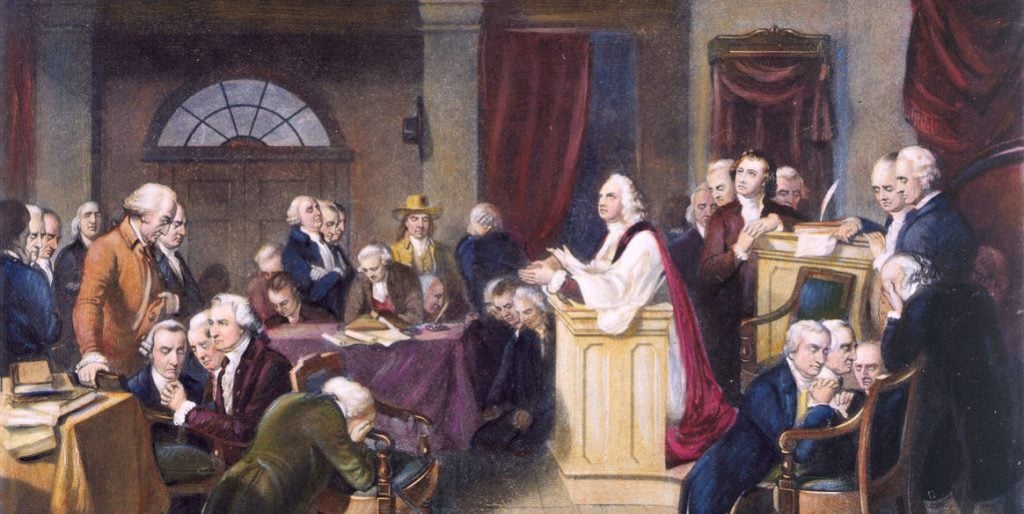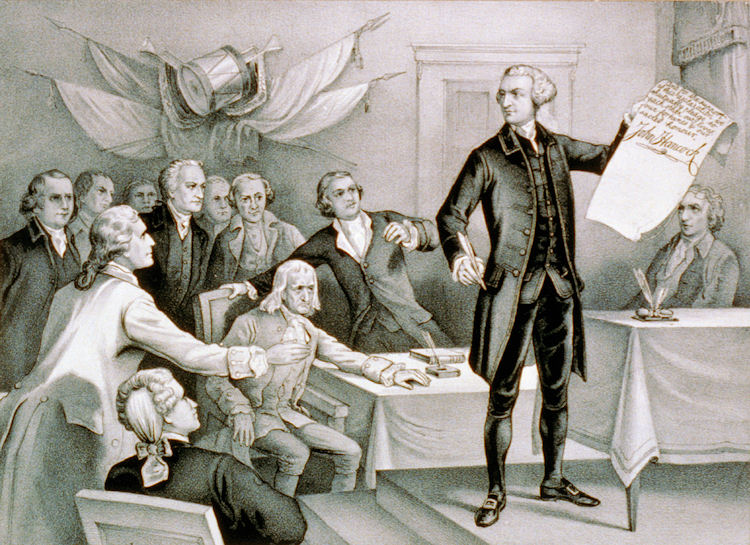The Government Calls to Prayer 1775 Continental Congress represent one of the most powerful examples of how America’s founding generation linked faith with public life. As war with Britain intensified and independence hung in the balance, leaders recognized that military strategy alone would not sustain them. From 1775 through 1784, at least fifteen official proclamations for fasting, prayer, and thanksgiving were issued by Congress.
These calls were not symbolic gestures — they were urgent appeals to seek God’s mercy, wisdom, and blessing on a fragile new nation.
The Prayer (Adapted from Washington’s 1783 Letter)
One of the most famous prayers tied to this period comes from George Washington’s Circular Letter to the States (June 8, 1783), written at the close of the Revolutionary War:
“I now make it my earnest prayer, that God would have the United States in his holy protection, that he would incline the hearts of the Citizens to cultivate a spirit of subordination and obedience to Government, to entertain a brotherly affection and love for one another, for their fellow citizens of the United States at large… and finally, that he would most graciously be pleased to dispose us all, to do Justice, to love mercy, and to demean ourselves with that Charity, humility and pacific temper of mind, which were the Characteristicks of the Devine Author of our blessed Religion, and without an humble imitation of whose example in these things, we can never hope to be a happy Nation.”
This prayer, offered at the conclusion of the Revolution, captures the heart of the government’s repeated calls to prayer: humility, unity, and moral renewal.
Historic Backstory
Beginning in 1775, the Continental Congress issued national proclamations inviting citizens to seek God through fasting and prayer. Leaders like John Hancock (22 proclamations) and Samuel Adams (7 proclamations) reinforced the belief that liberty depended not only on arms but also on divine providence.
These proclamations often called Americans to:
-
Confess national sins
-
Seek forgiveness
-
Express gratitude for blessings
-
Cultivate virtue in private and public life
The Government Calls to Prayer 1775 Continental Congress showed that early American leaders viewed faith and governance as complementary, not opposed.
Biblical Parallel — National Repentance
These proclamations resemble biblical calls to national repentance, such as when the prophet Joel declared: “Blow the trumpet in Zion, declare a holy fast, call a sacred assembly” (Joel 2:15). The leaders of the Revolution recognized that God’s blessing was essential for the survival of the new nation.
The Government Calls to Prayer 1775 Continental Congress remind us that nations, like individuals, are accountable to God.
Modern Application — Reviving a National Habit
Imagine if today’s leaders — at the local, state, and federal level — issued calls to prayer with the same urgency as the Continental Congress. While we may not see formal proclamations as often today, the responsibility to intercede for our nation remains with the people of God.
The National Prayer Wall carries forward that legacy by inviting believers in every ZIP Code to lift their communities and leaders to God in prayer, just as Washington, Hancock, and Adams once asked.
Visit Sites of the Revolution
Visitors can explore sites like Independence Hall in Philadelphia (ZIP Code 19106), where many of these proclamations were drafted, or the homes of John Hancock and Samuel Adams in Massachusetts. These locations remind us that America’s earliest leaders wove prayer directly into their governance.
📍 These calls to prayer were issued from Philadelphia, PA 19106 and echoed across all thirteen colonies.
And in the very next year, 1776, George Washington and his troops gathered in Valley Forge to seek God’s blessing on the Continental Army. Read about George Washington’s Military Prayers →
Reference Prayers and Proclamations: Historic Prayers in American Life (White House PDF)


